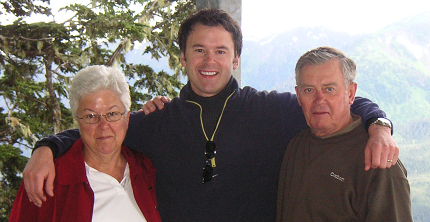 I noticed this month’s Harvard Business Review (March 2012) devoted two pages to reader comments on the article “Creativity as an Exercise in Self-Discovery.” Since I spent quite a few posts responding to that article, I thought you might be interested in how other people responded to it as well. I’m also hoping some of you will get inspired to share your own ideas about this topic too!
I noticed this month’s Harvard Business Review (March 2012) devoted two pages to reader comments on the article “Creativity as an Exercise in Self-Discovery.” Since I spent quite a few posts responding to that article, I thought you might be interested in how other people responded to it as well. I’m also hoping some of you will get inspired to share your own ideas about this topic too!
Is the world really divided into “creatives” and “noncreatives?” Maybe not, but many people still deem themselves unimaginative. The authors (Tom Kelley and David Kelley), both leaders at the design and innovation consulting firm IDEO, have discovered that “teaching” creativity is really a matter of helping people find the courage to tap into the “creative confidence” they already possess. (HBR, March 2013, p. 16).
Reader responses:
“The authors’ finding that they help people unblock creativity instead of “causing” it parallels my own research on how to get people to take personal responsibility for social problems. From picking up a candy wrapper on the sidewalk to organizing a political movement, the first step is to stop blocking people’s natural inclinations. When people take on a social problem, we tend to question their motives, for example. We accuse them of being self-righteous or holier-than-thou. It would be interesting to look at how we block the creativity of others in this way.” –Earl Babble, Campbell Professor Emeritus in Behavioral Sciences, Chapman University
“As they explained, the article’s examples are cases less of creativity than of pragmatism. Trial and error produces a better product over time, for example. We do not create so much as we discover for ourselves those things that previously existed. The ability of an individual to discover the same form of something in a different context is about the best we can hope for.” –Shawn Williamson, doctoral student, Claremont Graduate University
“It’s all about how long you can hold your breath. If you work right up against the deadline, the pressure can start to work for you and get the creative energy going.” – Graham Robertson, president, Beloved Brands
“Society’s perception of ‘creative people’ as only publicly imaginative or artistic individuals kills the self-confidence of engineers like me—logic-oriented people who try to be creative at work. Anyone can come up with original, elegant solutions if he or she (1) is knowledgeable about the situation at hand, (2) is comfortable enough to let the brain be flexible, (3) has the passion to spend time solving problems using his or her own solutions, not the common ones. We should talk about creativity in more pragmatic ways, not always referring to games, the arts, and spatial activities.” –Farnaz Motamediyan, researcher, Volvo Construction Equipment
“Can it be that innovation, in this context, is just a series of applications executed in a commonsensical way that works? Take two pieces of bread with a slice of ham on top instead of in the middle—it’s still a ham sandwich. Is that innovative?” –Arindom Borah, freelance consultant, water supply and treatment industry
“Imagine a world where everyone trusted his own creative confidence enough to allow old and unnecessary systems to fall away, knowing we could readily create a better way.” –Becky Blades, founder, Staristry
“Is it true that children who like solving puzzles become creative and innovative adults? I have observed this in my children. They always find something out of the ordinary to do.” –Charles Kaluwasha, consultant, ROI Travel Network
“My ability to come up with creative solutions has been developed through hands-on experience, and I would rather sit at a table with a group of 15 people speaking at once, trying to gain a single sentence of substance, than to sit in silence.” – Rosemary Braun, business development manager, Cisco Systems
Hope those letters spurred a few thoughts of your own. If so, please don’t be shy about sharing them here!
My next series of posts will look at the issue of “issues.” Specifically, how people in business can constructively engage in the public forum on issues of importance to their organizations.




